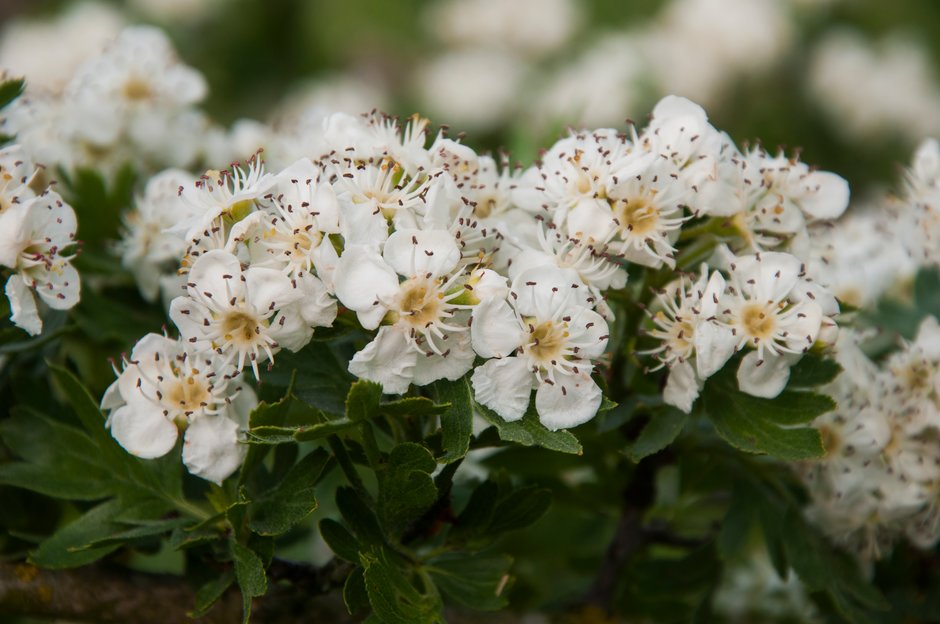Crataegus orientalis
eastern thorn
A small, spreading, thorny, deciduous tree to around 6m tall. Deeply-cut, dark green downy leaves with 5-9 lobes are grey beneath and turn yellow in the autumn. White fragrant flowers in rounded sprays of twelve or more are followed by aromatic red or yellowish-red fruits
Size
Ultimate height
4–8 metresTime to ultimate height
20–50 yearsUltimate spread
4–8 metresGrowing conditions
Moisture
Moist but well–drained, Well–drainedpH
Acid, Alkaline, NeutralColour & scent
| Stem | Flower | Foliage | Fruit | |
| Spring | White | Green Grey Silver | ||
|---|---|---|---|---|
| Summer | Green Grey Silver | Red Yellow | ||
| Autumn | Yellow Green Grey Silver | Red Yellow | ||
| Winter |
Position
- Full sun
- Partial shade
Aspect
West–facing or South–facing or North–facing or East–facing
Exposure
Exposed or Sheltered Hardiness
H6Botanical details
- Family
- Rosaceae
- Native to GB / Ireland
- No
- Foliage
- Deciduous
- Habit
- Bushy
- Potentially harmful
- Seeds contain toxins so these should be removed if you are considering eating the fruit, usually grown as an ornamental shrub Pets: Fruit are ornamental - not to be eaten - see the HTA guide to potentially harmful plants for further information and useful contact numbers
- Genus
Crataegus are deciduous trees and shrubs, usually with spiny branches, lobed or toothed leaves, and clusters of creamy-white flowers followed by red or black fruits. Some have fine autumn colour
- Name status
Correct
- Plant range
- SE Europe W Asia
How to grow
Cultivation
Will grow in most soils and situations
Propagation
Propagate by seed
Suggested planting locations and garden types
- Wildlife gardens
- Cottage and informal garden
- Low Maintenance
Pruning
Pests
May be susceptible to caterpillars, gall mites and aphids
Diseases
Generally disease-free but may be susceptible to a leaf spot, fireblight, powdery mildews and honey fungus
Get involved
The Royal Horticultural Society is the UK’s leading gardening charity. We aim to enrich everyone’s life through plants, and make the UK a greener and more beautiful place.
